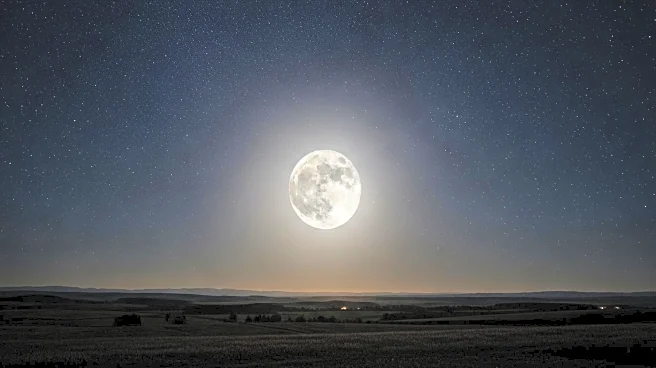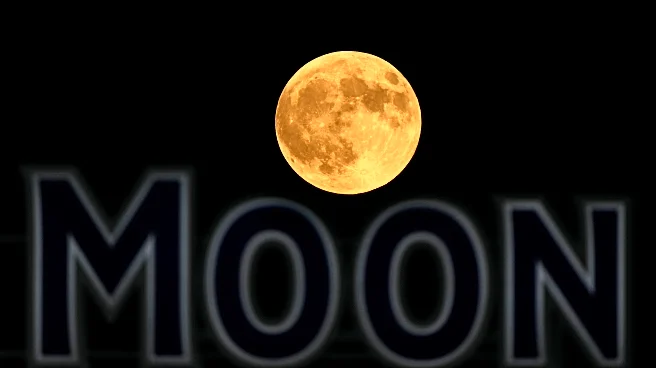What's Happening?
The first supermoon of the year is set to appear on Monday night, offering a celestial spectacle visible worldwide. This astronomical event occurs when the full moon is at its closest point to Earth in its orbit, making it appear up to 14% larger and 30% brighter than usual. The moon will pass within approximately 224,600 miles of Earth, according to NASA. This supermoon is the first of three scheduled for the year, with subsequent occurrences in November and December. Derrick Pitts, chief astronomer at the Franklin Institute in Philadelphia, notes that while the supermoon is not an unusual event, it provides a unique opportunity for sky gazers to observe the moon's enhanced brightness and size without the need for special equipment.
Why It's Important?
The supermoon phenomenon is significant as it draws public interest in astronomy and encourages people to engage with the night sky. Such events can inspire educational activities and increase awareness about celestial mechanics. For the scientific community, supermoons offer a chance to study the moon's surface and its effects on Earth, such as tidal changes. The increased brightness and size of the moon can also impact nocturnal wildlife and human activities, providing a natural light source that can affect behavior patterns. Overall, supermoons serve as a reminder of the dynamic nature of celestial bodies and their influence on our planet.
What's Next?
Following the October supermoon, the closest supermoon of the year is expected in November, followed by another in December. These events will continue to captivate audiences and provide opportunities for further astronomical observations. In 2026, two lunar eclipses are anticipated, including a total eclipse visible across North America, Asia, and Australia in March, and a partial eclipse in August across the Americas, Africa, and Europe. These upcoming events will likely generate additional interest and engagement from both amateur and professional astronomers.












